Economic Impacts of Mountain Biking Tourism - 2016 Update
This article is a collection of literature (both academic and non-academic) having some connection to economic impacts of mountain-biking. In this article I attempt to analyze the literature and abstract data to the extent practical, to allow for some very rough, comparative analysis between regions, countries and times. There are no standardized baselines for comparison, so I used my own judgment to come up with categories that would hopefully make sense.
These articles, the analysis within and the methodology employed are rough and ready. Criticism and input are welcome. I’ve been told that the information has been useful for trail advocates and for tourism organizations – which I expected. Much to my surprise, I’ve also been told that movie makers, photographers, grant-writers, government organizations and other research houses have also found the data useful so that has been particularly gratifying. This collection of information was publicly sourced; its collection and any analysis are donated freely to the community to use. If you could cite the source I would be grateful.
The genesis of this article was a wish to encourage a positive image for the sport by compiling and publishing research to inform and support mountain biking. I found diverse studies focusing on different areas, but no coherent picture and that led to the first article describing the economic impacts of mountain biking tourism published on Pinkbike in 2014. This 2014 article canvassed studies from 2010 onwards. Even then the sea change in attitudes towards mountain biking was apparent. At least in BC we are now seen as an affluent, positive outdoors demographic; visages of smiling happy clean bikers are used in real-estate marketing, in general tourism ads and in lifestyle tech-company promotions.
Real estate promotional picture from Vancouver Best Homes - Lynn Valley where the average price is $1,163.000 [and rising] and the area is touted as ....[sic]host to world renowned mountain biking at nearby Mount Seymour and Mount Fromme
________________________________________________________________________________________________
It turns out that there is good reason for this enthusiasm in the eyes of realtors, marketeers and tourism organizations. Data shows that mountain bikers are a lucrative demographic to target. To expand on the 2014 Pinkbike article I took the liberty of canvassing information about all mountain bikers, and not just bikers who travel. The demographics for mountain bikers in general are very similar to that of mountain bikers who travel; ie they are mostly male, between the ages of 25-44 and relatively affluent. For examples of studies about mountain bikers in general (and the basis for this profile) see a 2007-8 study of mountain bikers in the UK, Koepke's seminal and oft-cited 2004 study), Tourism BC's 2010 study data (pg 33 onwards), and a Parks Canada 2010 study.
By no means does this harken the death of the budget road trip (see this recent pictorial by Max Berkowitz for an example of how to do things right). Additionally, for some data that is somewhat older but shows that mountain biking event participants in the UK are younger and spend less than other studies' norms see Dan Harmon's executive summary for his 2007 study concerning participants in mountain-biking events. Food for thought.
Based on the public and private reaction I received from all quarters, the numbers from the Pinkbike 2014 article were surprising so I thought a 2016 update would be worthwhile. To repeat, this is what I found from the 2014 Pinkbike article and its literature survey.
.... mountain bikers who destination travel spend comparable amounts per day, spend as much time and are willing to travel as far as other groups such as golfers who tourism marketers typically chase. A useful study from the Canada Tourist Commission displaying average spend and duration of average stay for all tourists (all years) shows mountain bikers coming in about average or above average on counts as compared to other summer visitors. In general the EIA's show that the profile of a typical visitor is as follows:
• Predominantly male (approx 75%)
• 25-45 years old (approx 65-70% on a bell curve distribution with tails dropping off dramatically on each end except in Moab and Whistler where there were a significant amount of younger travellers). 19-29 year olds are generally the second largest category at approx 27%.
• A majority (55%) had household income levels greater than $80,000. As a datapoint 31% of all BC outdoor recreationalists had household income levels greater than $80,000. Mountain biking visitors were generally in line with all tourists to Canada going on guided tours (59% had incomes of greater than $100,000)
• Average stay at each location 3 to 5 days (longer if the visitor is from far away; shorter if the visitor is from close by)
• Average spend per day $60 - $100 (inclusive of accoms, food, recreation, etc but exclusive of travel costs to get to a destination)
Since that first 2014 article many people have kindly supplied me with more information and other economic-impact assessments from around the world. This update canvasses some of these updates and confirms the summaries and conclusions first reached two years ago. If anything mountain bikers are becoming higher yield and the activity a higher-margin sport. The dollar sum that bikers are willing to spend and the extent to which they are treating themselves are increasing, which bodes well for tourism marketeers. If I am missing other worthwhile literature, please let me know in the comments.
Source information is located at this dropbox public folder (for 2016 and for 2014 and also in my personal website (2016 and 2014). Many other sources are also collected at the Headwaters Economics site (use the dropdown menus to select for studies).
Video from when friends from South Tyrol came as tourists to visit the North Shore. Sometimes you need outside eyes to make you appreciate what you call home. Michaela wrote this up as "Trails, Burgers and Beers"
________________________________________________________________________________________________
A case study from Telimbela, Ecuador
Before getting into the morass of statistics it's worthwhile putting a human face on all of this.
Telimbela is a small village in Ecuador of approximately 100 people. You would never have heard of it unless you've either ridden in Ecuador (see part 3 of a Pinkbike frontpage 4 parter) or raced the Downhill Mama Rumi race. Telimbela is connected to the higher adjacent towns of San Miguel and San Jose del Chimbo by a 1920m vertical steep road. This year the people of Telimbela (and other villages located along this road) will finally get a water system bringing potable water to this centuries-old village.
Why is this happening? It's because of the Downhill Mama Rumi race and the national/international attention that it's drawn. A bit more context may be necessary. Mama Rumi (Mother Rock in Quecha) is a centuries-old Inca trail descending from 3023m to 1130m at Telimbela. Its 12km length and 1920m descent was lost for many years as the jungle took it back until Mauricio Gaibor’s grandfather re-discovered it in the mid-20th century. Now used primarily for downhill mountain biking, Mauricio’s granddad used the trail as a smuggling route for alcohol. Brewers would distill in the lowlands in Telimbela and hike all the way to more populated highlands starting at 9 p.m. in the evening and finishing in the wee hours of the morning to evade authorities.
The Gaibor's, friends and local volunteers re-opened the trail after countless hours of work fixing holes and clearing back dense cloud forest jungle. The Downhill Mama Rumi race attracted 284 participants in the 2015 edition. Over 600 people come to San Miguel and Telimbela over the race weekend and over 150 riders (international and Ecuadorians) come to the region during the year to ride this trail and other trails in the area (contact Ride Ecuador for more information about the area). Particularly for tiny Telimbela, that is a huge tourism economic boost and has resulted in real quality of life changes.
The story of Telimbela and Mama Rumi shows that, not only is mountain biking serious business, mountain biking can change lives for the better.
Mateo Cuesta who runs the guiding company Ride Ecuador on the Mama Rumi trail in central Ecuador. From Pinkbike "Ecuador Mountain Biking: Avenue of the Volcanos, Part Three - Mama Rumi and Southern Cordillera"
________________________________________________________________________________________________
Selected Newer Studies
The 2016 EIA folder collects studies from a range of dates from 2007 to 2016. It also contains some more recent general literature dedicated to broad forms of outdoor recreation in 2015 in Washington state, outdoor recreation economic impacts in Wales via a a 2014 EIA study, and economic impacts concerning cycling generally (for the UK in 2013 and for Arizona in 2014). In this drill-down below I attempted to focus on more recent studies.
________________________________________________________________________________________________
Kamloops BC
In 2015, Tourism Kamloops and the Kamloops Bike Riders Association (KBRA) partnered to conduct a study on mountain bike tourism in the Kamloops region. The study, conducted by Larose Research & Strategy, was presented at the October 2015 Mountain Bike Tourism Symposium in Williams Lake. (The full report is an internal planning document of Tourism Kamloops and has not been released publicly).
The study findings confirmed many of the trends and patterns from other studies regarding visitor profiles, trip activities, and other characteristics. This is unsurprising as Kamloops is a fairly large town located on the Trans Canada highway and would therefore attract a representative sample of mountain bike tourism visitors.
Areas surveyed extended to Kamloops trails as well as Sun Peaks with the surveys extending throughout a fairly extended timeline encompassing shoulder seasons (from May 1 to Sept 17, 2015). The length of the survey was dictated by Kamloops' long riding season. Interestingly this EIA found that the total dollar-sum economic impact of mountain biking tourism in Kamloops at $3.5 m total per annum was substantial (second only to Whistler in dollar value).
Of the total estimated 7,300 mountain biking tourists to Kamloops during the riding season, most were from BC (61%), with 13% being from other parts of Canada. A large proportion (27%) were international visitors. One look on Pinkbike at the number of videos and stories show that Kamloops is on the hit list for many people from outside Canada as a riding destination, so this is perhaps not a big surprise.
79% of visitors were male (not much deviation from norm); 27% of the mountain bike visitors were 25 - 34 years old, 18 % were 35 to 44 y.o., and 12% between 45 - 54. Not many were in the 15-24 age group (only 8%). A significant number (50%) had incomes of greater than $100k.
Many visitors were on road trips of medium length (3.8 days) with the average stay in Kamloops being 2 days. Average daily expenditures per person was $76 per person.
Some of the more interesting findings regarded sustainability-related issues, such as trail crowding and visitor ethics. With nearly unlimited single-track in the Kamloops region, trail crowding was virtually a non-existent concern of visitors, scoring a satisfaction rating of 9.1-out-of-10. The survey also asked visitors whether they were more likely to ride on trails that were legally sanctioned, and an overwhelming 84% stated that they stick to sanctioned trails.
I have no pictures from Kamloops. Here is a distant geographical approximation from Lillooet
________________________________________________________________________________________________
Bridge River Valley (Bralorne, Gun Lake, Gold Bridge) BC
This 2012 study is a bit dated. However it was worth including because such a large proportion of riders in this area are visitors (not many fulltime residents in this area). Additionally the Chilcotins and surrounding area has a relatively high profile in mountain biking culture and I'm a Chilcotins nut, so I feel I am allowed a little bias here.
The main point worth noting was that a significant number of visitors (21.5%) of visitors mountain bike when they visit this area This is noteworthy given that this tourism study was for both summer and winter activities. Most visitors were from BC (57.3%), but an overwhelming number (more than 26.7%) were from the Sea to Sky corridor (Vancouver, Squamish, Whistler, Pemberton). Numbers were not available to break down demographics of visitors by sex, age, income spend etc., as this was a general tourism study not involving primary survey data.
To get a sense of how mountain biking tourism has changed for Chilcotin visitors I got some more impressions from Dale Douglas of Tyax Adventures. Since 2012 the absolute numbers of visitors counted via Tyax Lodge (hotel and campsite) and the Tyax air charter service has increased, but by far the most significant increase has been international visitors (US, NZ, Europe, Mexico) with demographics being male, middle-aged, having disposable income and spending between $300 to $800 per day. This segment is booking higher end products (e.g., the float plane direct to the region from Vancouver or Whistler and guided multi-day trips) and is doubling year-over-year. Also showing a recent increase are women's participants: Chilcotin women's camps are now filling up. Sea-to-Sky riders still represent the bulk of the market, but numbers are not increasing at close to the rate that was once seen. Perhaps it's because local riders have so many other options. Perhaps it's also because Chilcotin riding requires a good dose of self-sufficient backcountry skills; something which the average mountain biker may not have.
To put a human face to these numbers the economic stimulus to the region is significant. For Tyax Ventures alone, the increase in business and the health of the Chilcotin mountain biking tourism market has meant fifteen seasonal jobs to the company alone. That multiplies throughout the restaurants, gas stations, suppliers and other small businesses in the region.
A horsepack trail approaches mountain bikers heading up Deer Pass in the South Chilcotin. This is one of the regions where various user groups interact well. Local outfitters like Tyax Adventures employ a good number of people in the area and also do a ton of trailwork. From Pinkbike "Tyax Adventures - Old Yet New In The South Chilcotin"
________________________________________________________________________________________________
BC Bike Race
Now in its 10th year, the BC Bike Race is a high profile, multi-stage mountain bike race held over various locations in southwest BC. The BCBR commissioned an EIA in 2013. Sampled were BCBR 2013 participants. Demographics were not included for participants so that breakdown isn't available.
What is significant is survey confirmation of the anecdotal evidence that many non-biking people also travel with biking parties; a data point to which the BCBR EIA puts a number. In total for every 3 biking people in the BCBR there was 1 non biker also traveling, and in the process, also spending dollars and contributing to local economies.
Some other information was answered by Andreas Hestler of the BCBR, who also kindly provided the informal surveys the BCBR conducts of event participants. One reason the BCBR has switched to a mid-week format is that so many participants stay for days before/after the event (an average of 2.5 days before/after). A substantial number (22%) stay for 4 or more days before/after . Additionally, the BCBR participants are now increasingly international (50% are now international, whereas a few years ago, 20% were international), use extra days to travel and because they view the BCBR as a bucket-list activity, dedicate more resources (travel and time) to the event itself.
Demographics for the event participant have some variation from other EIA regions in that BCBR participants are bike nuts. The BCBR is male dominated (85%) with most being middle-aged, but having disposable income especially as dedicated to recreational pursuits (65% have household incomes of over $100,000), are event junkies (63% attend 6+ events/year) and love their bikes (92% have 4+ bikes in their homes). Many are frequent travellers and have either already been to BC to ride/visit or are planning to come back to BC to ride/visit.
The BC Bike Race attracts hundreds of tourists each year to BC to ride a selection of coastal BC's finest trails. Lots of people travel with their families and friends. The race employs people and puts money back into the communities and trails among other things. It also attracts Flying Kiwis to North Vancouver attractions such as "Lawndart Corner" - From Pinkbike "BC Bike Race Day 1 - Racer's Take On The Shore"
________________________________________________________________________________________________
Northern BC
This Northern BC 2014 study was geared towards developing a tourism strategy for this vast region. There was no data available to segment visitors to Northern BC as that was outside the scope of the study.
Some points of interest were the results of a survey canvassing the attitudes of mountain bikers who represent the target market for Northern BC Tourism (pgs 60-8 ). Findings generally replicated that of all mountain-biking tourists generally ie mostly male, between the ages of 25-55 and of two distinct economic strata; relatively affluent and passionate with limited budget (ie inclined to budget road-trip).
Another data point of note canvassed in this Northern BC study is how to increase awareness. Simply put, many riders surveyed were unaware of the biking potential in the region. Following from that there was additional data (pg 68-75) diving into the question of how bikers even heard of destinations. The most important source of information was word-of-mouth recommendations from friends/peers. Closely tied were internet sources such as biking websites, videos, general internet research (Pinkbike of course). Lagging behind were print sources such as magazines and visitor centre literature.
Smithers is a town in Northern BC. It has a network of trails way bigger than any small town should have and a thriving bike community. Some (but not many) people travel to Smithers to bike. Many people move to Smithers because of skiing, biking and the outdoor recreation opportunities. If that isn't an economic impact I don't know what is. From Pinkbike: "Road Trip - Smithers, Burns Lake and Terrace British Columbia"
________________________________________________________________________________________________
Revelstoke, BC
Tourism Revelstoke commissioned an EIA surveying riders over two weekends in August of 2014 surveying riders in their local riding area of Mt MacPherson. The survey did not extend to the landmark high alpine trails such as Frisby Ridge or Keystone Standard Basin; two trails which attract large numbers of visitors. The timeline is during the high season for summer tourism, and so probably did the job of capturing the peaks of the riding season and representative samples. 52% of riders surveyed were visitors on the two-day weekend of the survey while 65% (writers note !!). were long-weekend visitors.
Extrapolations are that 3,716 mountain bikers visit MacPherson over the course of the riding season, not taking into accounts bumps from major events (BC Enduro series, Singletrack 6) or surveys at other major trailheads (Frisby/Boulder. Sale. Keystone Standard). This number shows that Revy punches above its weight in attracting tourists. Most visitors are from BC (54%), with 36% being from other parts of Canada. Very few riders (5%) are international. Breakdowns for sex, household income and age were not part of this survey.
Other numbers are inline with other destination averages; average stay was 2.4 nights; average group size was 2.4 people and average spend per person was 58 pp/day. What was above average was the absolute number of visitors. Revy's location on the TransCanada highway no doubt helps in this. Revy's success in giving people a reason to stop (for a couple of nights or more) and ride their bikes is irrefutable.
Revelstoke punches well above its weight. It attracts mountain bikers from all over North America. Bikefest Revelstoke is just another way that the town is diversifying its economy from resource roots. From Pinkbike: "Revelstoke's Keystone Standard Alpine Dreaming"
________________________________________________________________________________________________
Coldwater, Alabama, US
This 2012 EIA study from Alabama is not the most recent, but is included as it is fairly comprehensive and illuminating in that it canvasses an area not thought of as a destination for mountain biking, yet which attracts a large number of visitors due to its proximity to dense population centres.
Detailed breakdowns are at pages 26-29 with economic-impact model calculations starting on page 39. The results were taken from a survey circulated to mountain bike club affiliates located in the southeast United States (SORBA) area. Respondents were very interested (88%) in travelling to visit these Alabama trails. They were middle-aged (30-50 years old), very affluent (43% had household incomes greater than $100,000 pa) and tended to travel in groups (55% would travel in groups of 2, 3 or more). The type of riders who travelled to ride were avid enthusiasts riding more than 40 days the previous year.
Most riders indicated they would spend $61 pp/day without lodging and a very high $139 pp/day if requiring lodging so the yield of the visitors would be above norms (but keep in mind that survey respondents were passionate bikers who, no doubt, treat themselves well when on roadtrips).
Trailhead surveys were not conducted so there's no data on what percentage of riders at Coldwater would be local vs tourist/visitors but there is a fascinating table at pg 32 showing that the Canadian and other international numbers for "destination" biking locations of 50-70% of riders being visitors is matched and sometimes surpassed by US riding destinations. For examples, see Jackson Hole (60% visitors) and Chequamegon (95% visitors). Note that from the 2014 Pinkbike article, Oregon and Bellingham are more representative at 65% and 31.5% visitors respectively
As was seen in the Northern BC EIA, this Coldwater Alabama study showed that word-of-mouth and bike-related website referrals were the more important ways for southern US riders to learn about destinations. Print and general travel-related information was of limited and declining importance.
Having no knowledge of what Alabama looks like here is a picture of Sharon and Wade from Upper Tall Cans in West Vancouver. I'd imagine Alabama looks somewhat like this.
________________________________________________________________________________________________
Oakridge, Oregon, US
A 2014 EIA from Oakridge Oregon imparts a tighter geographical focus to the 2012 McNamee Oregon-wide study which was canvassed in the 2014 Pinkbike article. A bit of context. Oakridge is a 3,200-person town in the heart of central coastal Oregon, with an economy based heavily on resource extraction. That economy took a big hit when logging slowed down. Since Mountain Bike Oregon started in 2005, a series of three-day summer biking festivals has brought visitors to the area, injecting much-needed tourist dollars and attracting people to live.
Note that this EIA did not use trailhead surveys, but extrapolated rider and visitor counts from other sources. Methodology is explained in pages 21-27. A HUGE number of people now come to Oakridge to bike (in proportion to its full-time residents). Estimates range between 10,700 - 15,900 annual bike trips with an average group size of between 2.4 - 2.8 persons per trip. Back of the envelope scratchings means between 26,750 - 40,000 biking visitors per year to Oakridge.
.
This Oakridge EIA did not dive into demographics. The EIA's average spend/day numbers were based on extrapolations so would only repeat data from other EIAs. It's unlikely to deviate substantially from the 2012 McNamee study which showed that "65% of mountain bikers in those events were visitors. The majority (73%) were older at 25 - 44 years old (44% were 25 - 34; 29% were 35-44). Also a prosperous crowd 43% had household incomes greater than $100,000. Average length of stay and average spent per day was comparable to non mountain biking visitors to Bend (3.9/nights; $99/day vs 4.2 nights/$96/day)"
However, what is noteworthy from this 2014 Oakridge update was the revelation belying the dirtbag stereotype of visiting riders sleeping in trucks; it showed that many visitors were working stiffs (many with families) with 43% choosing to stay in commercial lodging and many others staying in commercial campgrounds.
Mountain Bike Oregon is one of the oldest bike festivals in the West Coast. It's brought first time and repeat visitors to the logging town of Oakridge, provided jobs and improved trails throughout the region.
________________________________________________________________________________________________
Tasmania, Australia
This 2013 Tasmania report is not strictly speaking an EIA, but is useful in assessing the viability of promoting a somewhat exotic (at least to North Americans) destination of NE Tasmania for mountain-biking tourism and is quite detailed. Note that there is also a 2011 study for Northern Tasmania
None of the data in the two EIAs cited here are based on visitor surveys. Interestingly from the 2013 study (pages 35 - 37), it's now assumed that mountain bikers' spending will be inline with other tourists, with an average spend pp/day of $97. It's assumed that mountain biking visitors will combine biking with other activities, but will spend an extra 1.5 days in NE Tasmania due to the biking trails; with even Tasmanian riders travelling within the state doing so and travelling to NE Tasmania just for trails. From the 2011 study, a Tasmania-wide survey shows that biking tourists in general stayed significantly longer and spent significantly more over their entire trip than other tourists, including even other tourists who are in Tasmania for outdoor recreation (page 41). Canvassing tour operators and event organizers in Northern Tasmania a typical visitor profile is inline with other regions; ie typically male, 20-50 years old, higher income and willing to travel domestically and internationally.
I have no pictures of Tasmania so here is a shot from Penticton BC. I'd imagine Tasmania looks like this and not, please call me out or better yet, invite me for a visit!
________________________________________________________________________________________________
Graubuenden, Switzerland
This 2016 study is from the Swiss canton of Graubuenden in Switzerland, which I confess to having read via Google Translate
Having had the pleasure of visiting Graubuenden in the relative infancy of its bike tourism (multipart Pinkbike article from 2011); it's been astounding to see how the Swiss (with the advice of Allegra Tourism) have developed the Graubuenden Bike tourism product so masterfully. It's a consistent theme of hospitality towards biking tourism; one that's been recognized even in mass-media as being successful and keeping ski operators happy in the summer.
This document is the result of surveys of 2,938 guests throughout 2015. 75% of visitors to Graubuenden were Swiss; 25% were internationals. Approximately 67% are male between the ages of 30-59. Most (over 80%) are still into pedalling for nature or sightseeing with less than 15% into enduro/DH. Visiting mountain bikers remain high value with 70% staying between 2 - 7 nights (32% 4-7 nights; 40% 2-3 nights). As in Oregon, mountain-bikers travelling to Graubuenden destinations were not sleeping in their cars with over 74% staying in hotels/rented apartments (as opposed to camping). Daily spend per person was also high at 90 CHF and an additional 85 CHF for those who paid for accommodations. Interestingly a significant number (13%) travelled with family.
A significant deviation from other regions is on page 20, which speaks to how biking visitors found out about Graubuenden as a destination. The Graubuenden.ch site was cited as the most important source for information with maps, regional websites as also being important. This is very different from Australian and Canadian examples where "official" tourism collateral is relegated to obscurity.
This 2016 update confirms the previous Swiss studies from Graubunden dated 2012 (trans.) repeated and reproduced below. "Graubunden mountain bike visitors are mostly 40 years old, predominantly male (67%) and are from other areas of Switzerland. Trail bikers stay an average of 2.7 days; downhillers stay an average of 4.7 days. Mountain bikers were high value, spending an average of 159 CHF/day (higher than other visitors who spent an average of 128-140 CHF/day)."
These guys are good friends who own Trailrider Bikeshop in nearby Ageri. We rode in Davos as guests of Tourism Switzerland and Graubuenden canton who hired Darco Cazin of Allegra Tourismus (a singularly effective consultancy) to help them shape a coherent mountain biking tourism strategy. 20 years ago it's a distinct possibility that such jobs didn't exist - hard to believe in mountain-bike mad Switzerland. Mountainbiking brings jobs and CHF to the communities. From Pinkbike "Switzerland for Dummies: Davos Klosters"
________________________________________________________________________________________________
New Zealand
Two more recent studies from biking-mad New Zealand are included. One is the 2013 Taupo Cycling EIA. Another is the 2016 Rotorua Crankworx EIA. Both are from APR Consultants who kindly provided the reports for distribution.
Taupo
Taupo is in NZ's North Island located at the NE tip of an inland lake. It's a destination for roadies and triathletes, but a trail inventory shows a large off-road network. I could not break out mountain biking from general cycling numbers, but there's a paucity of recent EIAs and demographic breakdowns for NZ, so I'll take a stab at deconstructing numbers. Comments, critiques and pointers to EIAs or NZ studies I have missed are welcome. This Taupo EIA took data from participants in the Lake Taupo Cycle Challenge an event involving road and offroad categories. 2839 participants were surveyed. The 35 - 54 age group was far and away the largest at 63%. As with all things mountain-biking it was a sausage fest (72% male). Most event participants (93%) were visitors (Taupo is small and this was a big event) with 63% from North Island, but 4% being international visitors.
The Taupo survey also canvassed the 1921 people who travelled to Taupo as a riding destination in the past 12 months. As consistent with Oakridge, OR and Graubunden Switzerland most of these visitors stayed in hotels or other accommodations (63%). Group sizes varied with average groups being approx 2.4 persons. Average group spend pp/day was $191; unusually high but perhaps reflective of Taupo visitors' preference for staying in quality accommodations..
Rotorua
The Rotorua EIA is heavily mountain-biking focused and also centred around an event. Rotorua is located just north of Taupo and also on the North Island of NZ. Heavily marketed, this is an eight-day event attracting a significant number of international visitors (10.3%), many of whom planned around Crankworx as one leg of a cycling trip to NZ itself. However, only the economic impact to Rotorua itself was considered for this EIA. Strictly speaking this is a spectator event and not one where the majority of survey respondents can be assumed to have ridden their bikes. However from personal experience, most Crankworx spectators mountain bike and it can be assumed that the demographic of attendees would somewhat track the demographics of people who would likely bike in Rotorua (60% of Crankworx attendees said they would also bike while in Rotorua). With this caveat the data is presented as follows.
In total 15,439 people were estimated as having attended Crankworx Rotorua including participants (ie athletes, support, volunteers, visitors). Surveys were conducted of all attendees with most being males (70%) between the ages of 25-49 (55%)
Keying just on visitors 77% stayed overnight or longer with the average length of stay being an eye-popping 4.2 nights. Most visitors were from the North Island (60%) itself. Visitors tended to stay at hotel/other accommodations (53%) Average group size was 3.4 people (many came as families - no breakdown on that number).
.
With no pictures of New Zealand here is a throwaway of how I imagine the riding in Nelson to look like
________________________________________________________________________________________________
Conclusion
At face value, recent data shows little change from the seminal 2004 Koepke study profile (pages 3-6) and the 2014 EIA study first published on Pinkbike. Anecdotal and some limited data sets (Oregon and Swiss bikers willing to spend money on hotel and accommodations for example), however, show that mountain bike tourism is becoming a higher-yield, higher-margin endeavour. If anything, the mountain bikers willing to travel to a destination to ride their bikes are willing to spend more, to have more comforts, to cut down on travel time so as to increase saddle time. By no means does this mean the death of the van-by-the-river, beans-in-a-can and a-can-of-PBR road trip. One look at parking lots and trailheads in the hotbeds of Vancouver - Squamish - Whistler will tell that tale. As a sidebar, it's also worth noting that the very key and often-cited Sea to Sky Economic Impact Study of 2006 conducted by Mountain Biking BC will be updated with results to be published in late 2016; something that will very likely freshen data concerning mountain-biking's economic impact.
It seems that some communities are now realizing that mountain-biking is a normal (and generally positive) activity and that mountain bikers are normal (and generally positive) people. It is my sincere hope that this article and the 2014 article help by presenting objective data from a selection of places around the world, showing a lot of positive facts (hence the excruciatingly tedious statistics); i.e., that mountain biking has a measurable positive economic impact, especially when gauged in terms of tourism and visitor dollars.
In the 2014 article I also alluded to the immeasurable impact mountain biking has on a community. The very existence of trails, of outdoors recreation and of the possibility of sharing mountain biking with their kids draws people to a community. Indeed a thriving local scene with good trails and outstanding local community doesn't just add quality-of-life for locals, but also tends to attract people who want to relocate to the region . This 2016 update confirms these immeasurable impacts; indeed the Northern BC, Revelstoke and Oakridge, Oregon studies specifically make mention of this fact, on which you cannot put a $/CHF/EUR value.
As a final note, there is a vocal minority of mountain bikers who want to see less people on the trail. Some oppose the increase in bikers because increased ridership results in increased impacts. This article does not purport to address this issue, but welcomes discussion of that issue in the comments. Personally, I feel that increased ridership is a fact. What we should do as a community is discuss what to do about it. My opinion is that one concrete thing to do is encourage increased resources to trail maintenance, both from the community and from parties who benefit from mountain biking. It is my hope that this article assists in this respect.
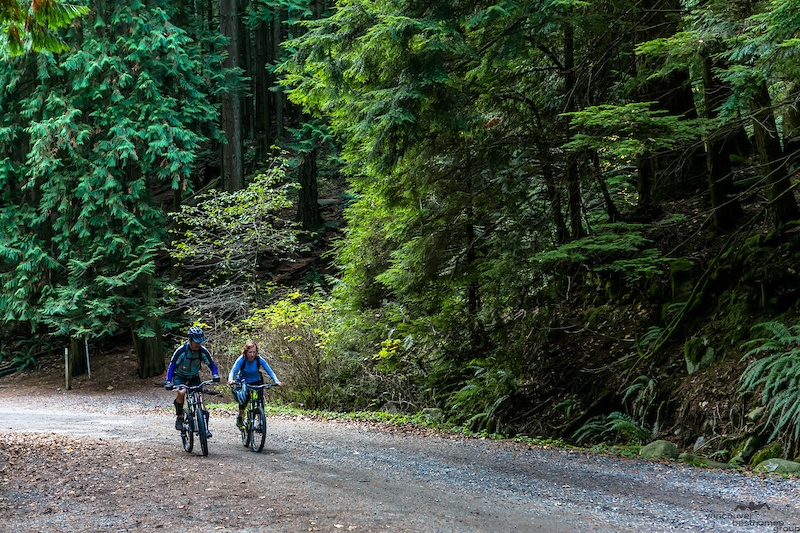

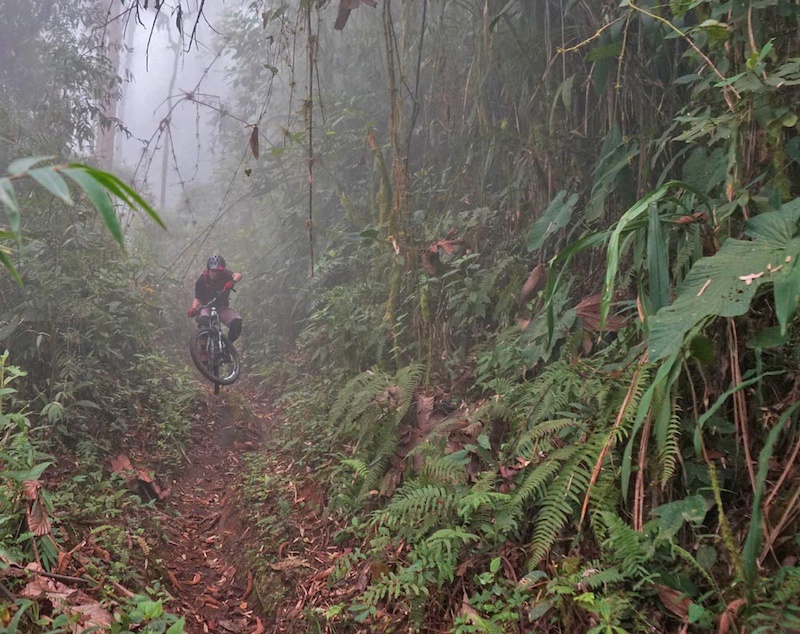
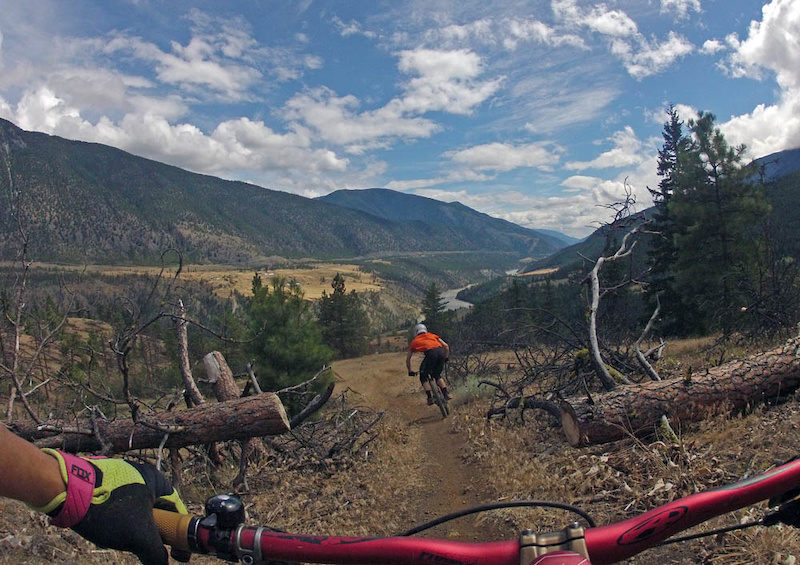

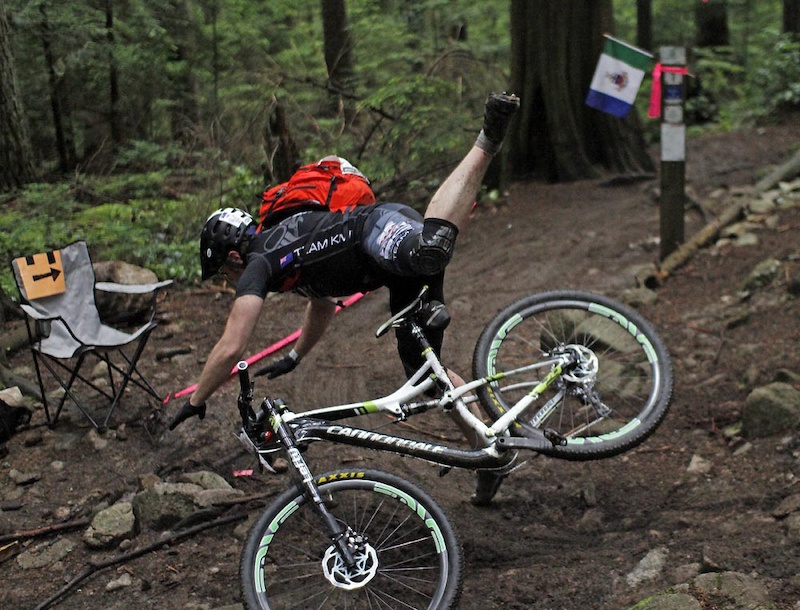
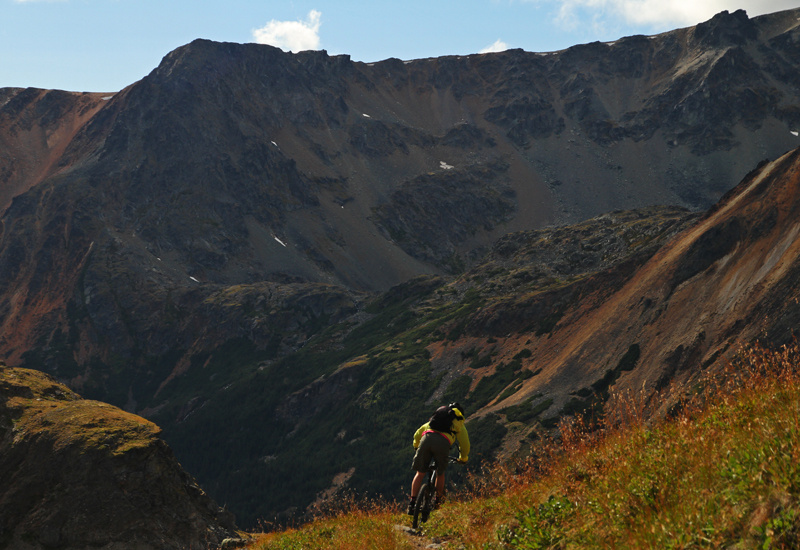

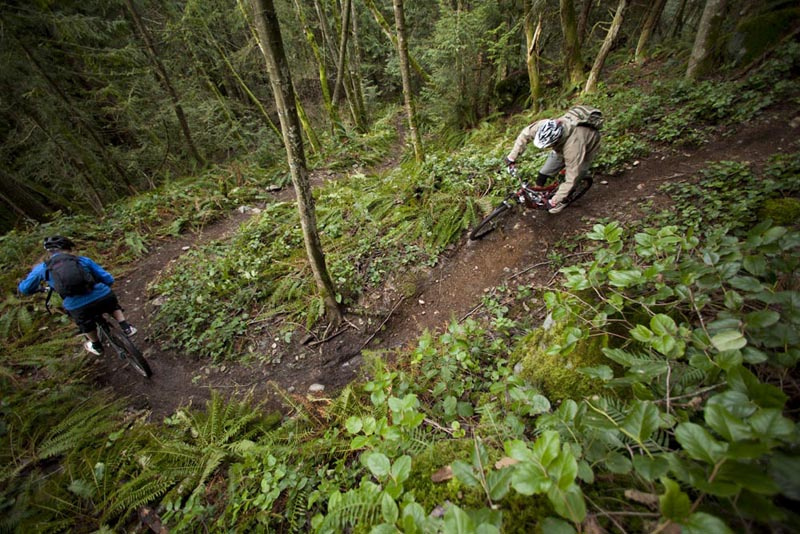

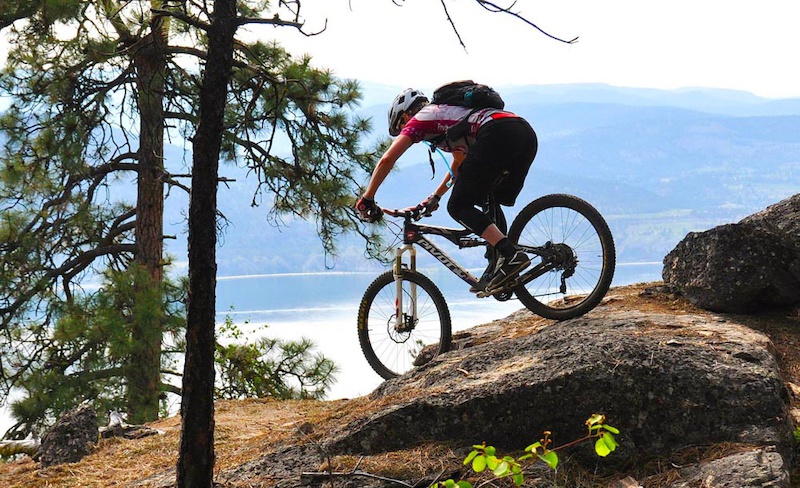
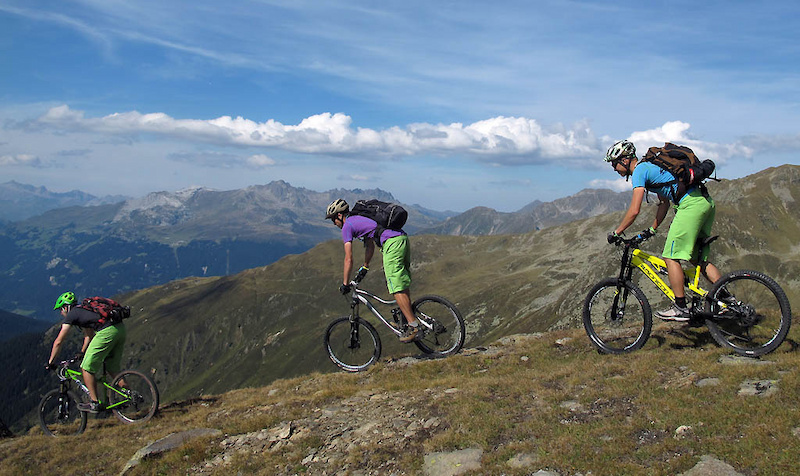
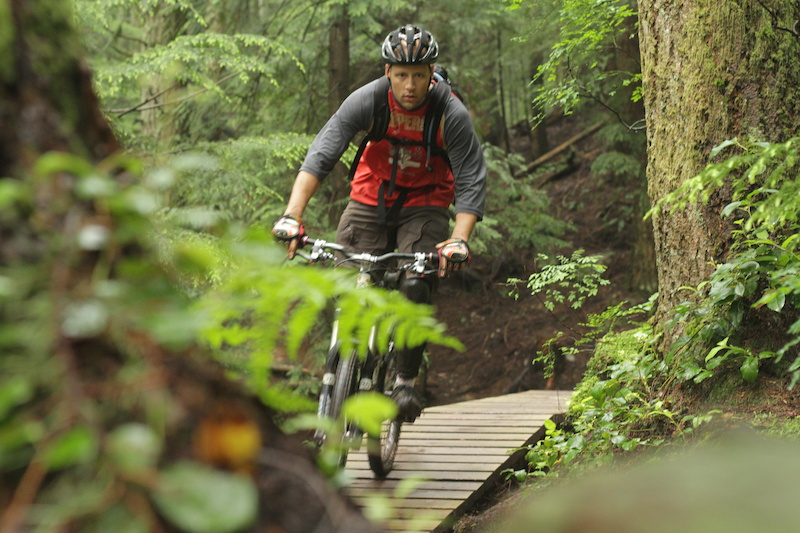

I doubt the majority of riders realize the importance of this info/data to us, who work behind the scenes in MTB advocacy. In order to raise awareness, create partnerships, apply for funding, legalize trails and grow the sport, we need facts to make our case.
If I can add one important element, it is the growth of interest in MTB trails within the First Nations communities here in BC.
Under the umbrella of the Aboriginal Youth Mountain BikeProgram, I have been traveling to many FN communities to deliver trail building workshops. Clubs are forming partnerships with First Nations and co-operate on trails and MTB infrastructure. The benefits go beyond economic impact, of course, but the monetary value this development brings to FN communities can not be underestimated.
(Here's a link to some photos, FN crew working at Soda Creek, BC)
A huge "Thanks!" from us here at the CMBC for the work you do.
The next step is to get more City Officials and Planners onto bikes and advocating for this type of recreational pursuit.
PS. if your local club isn't speaking to the politicians, then they won't get funding/support. Get out to the Council meetings and state your case. You may be surprised at what good things come your way.
@Tkavan01 your anecdotal experience aside (and I'm not dismissing it) I found it interesting that so many MBO/Oakridge visitors mentioned that they would be interested in bringing their families to Oakridge.
@gbeaks33 what were your impressions of other Oregon towns such as Ashland, Hood River and/or Bend. I cite those as places with perhaps a mix of trails + amenities
@leelau Oakridge is not "central coastal Oregon". Central and Oregon, yes, but no where near the coast. Great story though! Definitely food for thought.
In response to other Oregon MTB towns: I don't do it in my paper, but I mention it in some of the presentations I've given on it. It really depends on what you're looking for. Bend is a much bigger city with more restaurants and a lot more breweries, night life, etc. However their trail system is more loop oriented and with significantly more riders, can feel very crowded. Oakridge has 350 miles of trails, with individual trails as long as 15 miles. So even with a dozen riders on the trail, you're so spaced out it can feel as if you have it all to yourself. If you're more concerned about riding as much as possible than night life, Oakridge is the place to go. Hood River slots somewhere in the middle of Bend and Oakridge for size and amenities, but being 45 minutes from a metro area of 2 million, can also get very very busy.
Thanks again for starting, and continuing, this conversation on mountain bike tourism!
...you can put together a mega awesome ride at Phils....up Mrazek, Down Farewell, up North Fork(Tumalo Falls) to Metolius-Windigo, down Flagline, down Swede ridge, down sector 16, down Whoops, down Bens. = possibly the best ride in Oregon.
tons of good riding in Oregon, Hood river, Sandy ridge, Black rock etc...
It really struck home to me how blinkered one can get living in SW BC being so close to destination areas yet perhaps being blind to the utility and attractiveness of regional destinations proximate to large urban population centres. Population centres starved of trails and biking opportunities like your neck of the woods, or the Welsh/Scottish regional riding parks.
www.pinkbike.com/photo/13756536
Then Wales voted to leave the Europe Union.
VEDDER MOUNTAIN WILL BE CLOSED FROM JULY 20th- AUGUST 20th
The road and all trails are closed during the week from July 20th to Aug 20th as the Ministry upgrades the main FSR. Trails will be open on weekends starting from 5 or 6 pm Friday evening to 6 am Monday morning.
Signs and gates will be installed to deter people from using the area. This is a legal closure please respect this for your own safety. People choosing to ignore the signage may be subject to fines.
Due to the tight time frame, the contractor cannot afford to take time to stop work for people who have ignored signs. Trees will be getting dropped possibly over trails and there will be heavy equipment on sight. The machines being used will have the tendency to be spitting out chips as far as 20 feet.
When we have more information from the Ministry we will post it up here. Please respect the closures in the mean time. Thank you for you cooperation.
Only been to Vedder once, the trails are amazing! The road was pretty rough, we pedaled up the awesome climbing trails there, I would think you'd want a decent truck to drive up that road.
Mountain Bikers' Attitudes Towards Mountain Biking Tourism Destinations, Moularde, 2015.
researcharchive.vuw.ac.nz/xmlui/bitstream/handle/10063/4384/thesis.pdf?sequence=2
What factors make rail trails successful as tourism attractions? Developing a conceptual framework from relevant literature, Taylor, 2015 (not Mountain Bike-specific, however; there are some relevant components here).
www.infona.pl/resource/bwmeta1.element.elsevier-fae97764-b27a-35a4-88d9-eeb56617ac71
As a different example, the Nature Trails Society here on Southern Vancouver Island has been successful in raising $280,000 to interconnect trails across the region. Disparate land owners/managers have been convinced to provide support when presented with the evidence provided from a number of these EIA resources.
naturetrailssociety.com
Keep up the good work! Cheers, Ray
The best data is Swiss and the UK
Mountain biking has become an increasingly more popular sport and industry in Australia and throughout the world. Australian mainland alpine and Tasmanian biking locations offer mountain bikers unique riding experiences comparable to destinations in North & South America, Canada, Europe and New Zealand. These Australian locations also encompass significant natural and Aboriginal cultural heritage values. Consequently, there are legislative requirements in place for the protection and mitigation of harm to significant natural and cultural heritage places from the construction of mountain bike trails. If managed properly, these natural and cultural values can be integrated into sustainable trail networks with vast recreational and cultural tourism potential.
The most common Aboriginal archaeological sites in Australia include stone artefact scatters, scarred trees (extracting wood/bark to make canoes, containers and shields), campsites, rockshelters/cave entrances, quarries (source of suitable stone for making artefacts), and many more site types. Building a trail through a stone artefact scatter for example is destroying this place (unless there is a permit or CHMP in place). Utilising manual excavation over mechanical excavation can help minimise harm to sites. I have read on social media about illegal trail construction where significant Aboriginal sites have been destroyed which can cause significant distress to local Aboriginal communities. Archaeological sites are a non-renewable resource and are the tangible links between present and past communities. Once destroyed, these sites are gone forever. Added to this is the fact that trail construction can damage or destroy significant and rare local fauna and flora habitats (natural values). In this case as well, natural landscapes are considered cultural landscapes.
Appropriate consultation and heritage assessment including sustainable trail design and construction integrated with interpretive signage about local history and environment is the best way moving forward. Some local governments and land managers are better than others. In some areas unfortunately bureaucracy prevails. Not sure if this helps but happy to chat!!
Unfortunately, the media campaign was utter rubbish, as the significant Aboriginal sites were: (i) several kilometers away; and (ii) on the other side of a busy road. In this case, the trail was dirt only, and nowhere near any rock shelves or the like.
Neither is a finite resource.
Also, I'd fall over too if I had a "lefty" on my bike...
Quick question, I did very quick look at some of the supplemental info you provided and it looks like the dollars spent per night in the studies is the mean number... when trying to profile the group of visitors, were you able to find any numbers on the median spend per day?
See www.pinkbike.com/u/leelau/blog/economic-impacts-of-mountain-biking-tourism.html
"• Average spend per day $ 60 - $ 100 (inclusive of accoms, food, recreation, etc but exclusive of travel costs to get to a destination)
To the extent there is data, international travellers generally spend more than domestic travellers over the course of their trip. Perhaps that might be because the upfront cost of forking over for the airline ticket means that the international traveller wants to invest more time and money in having a good experience. But international visitors also spend more days; accordingly their per day spending tends to be less - presumably because package lodging and food deals are priced cheaper for longer stays."
Does that help?
Last year I was lucky enough to visit the Czech Republic and got to ride Rychlebske Stezky trail center. They have a pretty cool story of how one guy got a whole village behind him and created some seriously fun trails and now bring lots of tourist $$ to an otherwise struggling economic region.
Definitely a success story and some ripping trails
On a more positive note, thanks for the article, extremely interesting.
And I'm neither an M.D. or P.Eng, just a BCBR finisher.